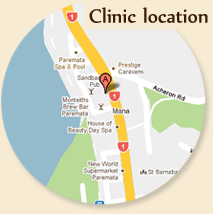Orthopaedic Surgery Glossary
Introduction
Mana Orthopaedics has compiled this glossary of medical terms relating to orthopaedics that includes a wide range of medical terms. These are to help you further understand the surgical procedures information.
-
Foot and ankle terms
Arthroscopy
Arthroscopy is a surgical technique that utilizes a television camera to visualize the inside of a joint. Many common orthopaedic procedures are now performed using arthroscopy (e.g. removal of torn meniscus in the knee, decompression of impingement syndrome in the shoulder). The healing time from an arthroscopy is less than an 'open' procedure. However, in some cases an open procedure is necessary for ideal treatment.
Arthroscopy is commonly performed in the knee and shoulder joints and less commonly used in other joints. Small incisions are made to insert a camera and other instruments into the joint. The surgeon then uses a monitor to identify problems that exist within the joint.Debridement
The surgical removal of foreign material and dead tissue from a wound, in order to prevent infection and promote healingDistal Soft Tissue Release (DSTR)
This procedure is a major part of the operative treatment of Hallux Valgus. The pathology of hallux valgus is highlighted by subluxation of both the metatarsophalangeal and metatarsosesamoid joints with concomitant contracture of the lateral capsule and soft tissue structures. The operative treatment requires an understanding of the importance of restoring the anatomic relationships about the metatarsophalangeal joint. The surgical technique of the formal distal soft tissue release and the “through the joint” methods are discussed.Hallux Valgus Bunion
Bunion, also known as Hallux Valgus, is a painful condition caused by misalignment or enlargement of the bone at the base of the big toe (usually from improperly fitting footwear or excessive physical activity); bunions can lead to joint arthritis if left untreated.Meniscus
A meniscus is a disk of cartilage that serves as a cushion between the ends of bones that meet at a joint. -
Spinal terms
Ruptured Disc
Spinal Stenosis
Many patients with back pain, leg pain, or weakness of the lower extremity muscles are diagnosed with a herniated disc. When a disc herniation occurs, the cushion that sits between the spinal vertebra is pushed outside its normal position. A herniated disc would not be a problem if it weren't for the spinal nerves that are very close to the edge of these spinal discs.
Spinal stenosis is a condition that is caused by a narrowing of the space surrounding the spinal cord or the spinal nerves. The spinal cord extends from the brain to the bottom of the spine. Along the spinal cord, spinal nerves exit the spine and extend to the rest of the body.
We cannot answer specific questions via this website, instead we encourage you to ask your GP to make a referral to our orthopaedic surgeon Mr Nigel Willis.



